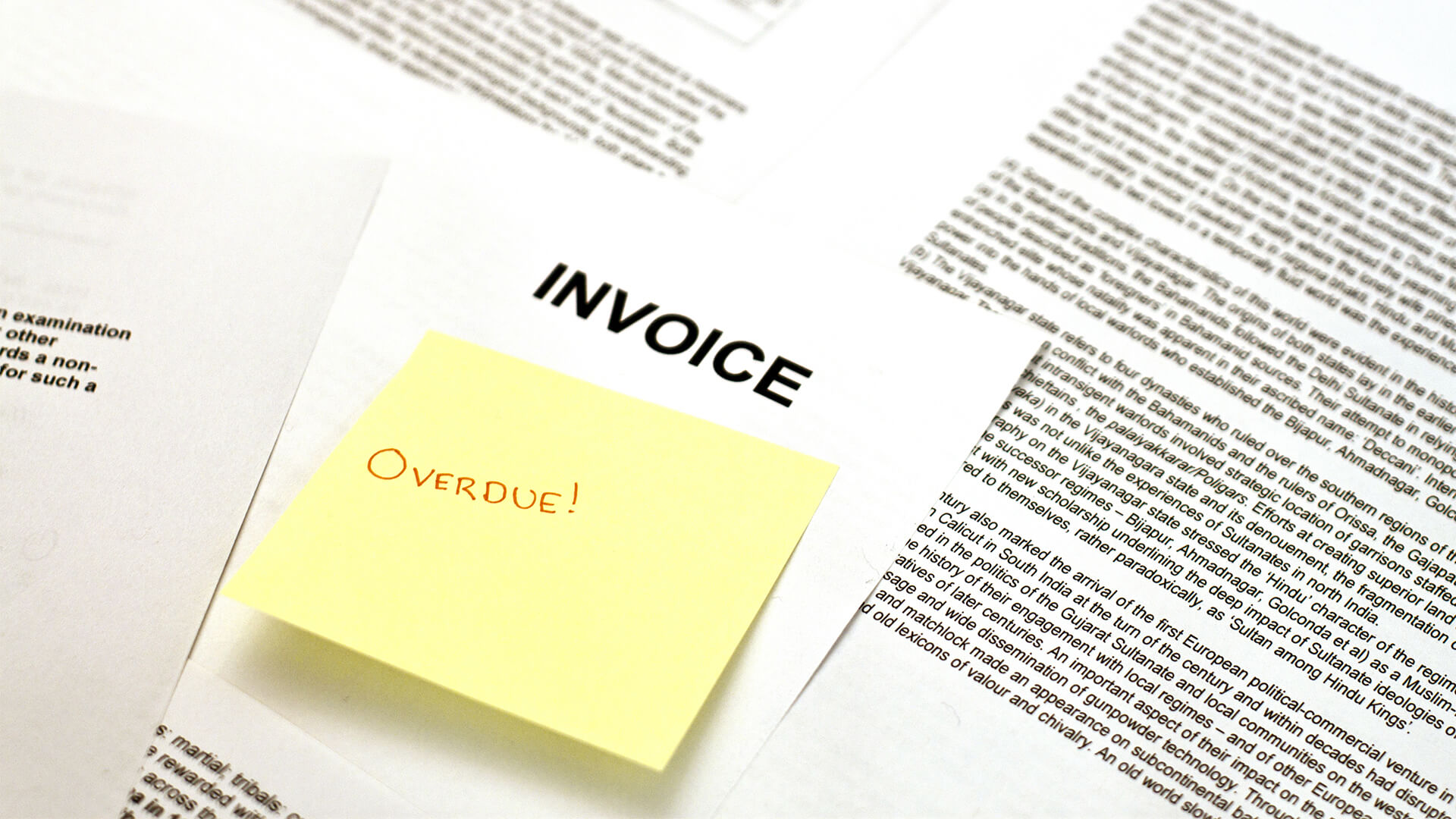After completing a great project or finishing your work, you set your payment terms, and you present your invoice to the client. Then, you’re waiting for the payment and…nothing, the invoice hasn’t been paid.
Ian Wright, founder of Small Business Prices, says: “invoices continue to cause huge problems for small businesses in the UK, who are already under a lot of pressure as they recover from the aftermath of COVID-19. With approximately £50bn currently owed to SMEs in late payments, we hope that these simple tips will help small businesses to understand their rights when this happens. We also want to ensure that small businesses understand everything they can do to ensure they are getting paid by their clients on time”.
1. Set payment term expectations early
Chasing invoices are part of any business (small, medium and large) and not a particularly delightful task either. However, making sure you set payment terms early is a great way to ensure you get paid on time. Enforcing clear payment terms will make sure your customer has no doubt when their payment is due. Also, running credit checks on your customers can ensure that you’re only doing business with a reputable company or people. Using automating payments is a fantastic way to avoid the issue of late payments altogether, as Direct Debit payment solutions can handle the payment process for your business. Organizing payment methods upfront which address how many days the customer has to pay the invoice and whether the customer will need to pay for a proportion of the cost upfront can also avoid confusion with the customer to ensure you are paid quickly and efficiently.
2. Inform your clients about interest on overdue invoices
Discussing payment terms early on can prevent awkward or potentially damaging problems to occur later. Charging interest on overdue invoices can be a great way to avoid not being paid or being paid late; the customer should be warned that this will happen if their invoices are not paid on time. In an effort to aid small businesses, governmental legislation has been put in place that allows business owners to charge an additional 8 percent on top of the general base rate the Bank of England charges on late payments on invoices that remain unpaid. Additionally, any debt recovery costs can become the responsibility of the client. By law, a payment is officially classed as “late” if no payment has been made 30 days after receipt of the invoice, goods or service by the customer. This can be a guideline of when to know the payment is late and when you can charge interest. In case you struggle to determine what kind of interest you should be charging; you can take government guidelines into account. One approach some businesses chose, is to charge additional interest of 2 percent on payments fulfilled after 30 days and let this increase to 3 percent for payments made after 60 days.
3. Send out a late invoice notice
When payment from a customer remains unfulfilled, and you receive no response upon reaching out to them, you should chase them with another email informing them about the open account. This email will explain to the customer that the invoice is now overdue and include a statement of the outstanding cost. Although it may be the natural response to send an angry or aggressive email as you’re entitled to this money, keep the email friendly and polite as possible in its tone. If you still have outstanding work for the customer, you should consider putting this at the bottom of your to-do list. After all, you may be completing more work that will be paid late or not at all. Don’t lose hope yet; email can be an incredibly effective way of credit control.
4. Send a statement of the outstanding cost
If the customer still hasn’t paid after 30 days, or the agreed amount of time, you need to send them a final email before taking additional, formal steps. When you send out this final nudge, ensure you make the client fully aware that you will be taking the first steps in legal proceedings in an effort to recover the funds owed to your business and that immediate payment will close this account without need for legal action. Be mindful to include the original invoice as an attachment to this email as well for full clarity. You should still be as polite as you can be; it’s your goal to get a payment date agreed as soon as possible. Whilst these elements of doing business can be stressful and time-consuming, it’s best to make an effort to not let it overtake your time and thoughts whilst being firm with the customer that you will not condone this. If you still have outstanding work for the customer, cease all of this work until the invoice has been paid.
5. Sending a Statutory Demand
A Statutory Demand is a formal type of legal letter that can be sent to a client. They have 21 days to respond to this letter. When a customer ignores this letter, it opens up the possibility for you to take them to court. Ignoring such a statutory demand can have serious risks, as it increases the chance for a company’s or customer’s to be liquidated. This kind of letter can be sent by yourself, however you should be mindful of the strict criteria required to make it legally upheld. It is highly recommended that prior to taking the steps of sending a statutory demand, you seek legal advice.
6. The Option of Taking Legal Action for Unpaid Invoices After 30 Days
As a last resort and throughout the whole process the unpaid invoice has not been challenged by the client, it is possible to take court action in an effort to close the account. Claims of up to £100,000, follow an online process as outlined by the Justice Department. If you choose to go down this route, you have to be able to proof of sufficient communication between you and the client about the issue. In case the customer disputes the claim being made against them, you might be required to attend court. Consult Money Claim Online (MCOL) guide from HM Courts & Tribunal Service to ensure you have gathered and provided all the correct information that’s needed to put forward a claim. Do however make sure you consult a legal professional before taking action.
The founder of Small Business Prices, Ian Wright, believes: “Setting expectations in the beginning can help to ensure that you get paid on time and don’t have to chase overdue invoices. While you are discussing final costs, make sure your payment terms and invoicing process are extremely clear to the customer, and make sure to wait a few days before reaching out when you first follow up on invoices. Sometimes life can get in the way, so a polite, friendly reminder may be all it takes for some people to pay a late invoice. However, if you need to remind them further, make sure you use these steps to keep chasing the invoice, you are entitled to this payment. Additionally, whilst it is unfortunately sometimes necessary to take legal steps, it’s usually unlikely it’s necessary to go down this route”.








